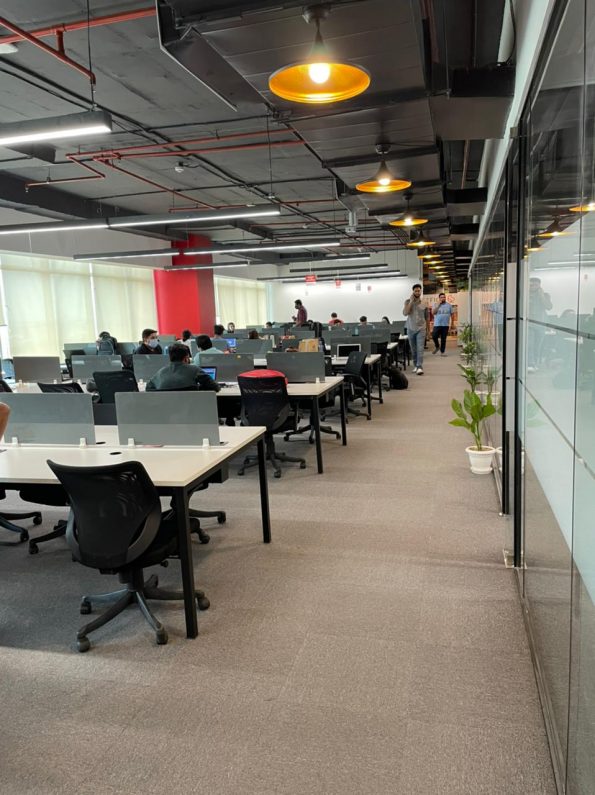You can upscale your business if you keep it in sync with what the clients need. Embedding your client needs into your business DNA involves creating a culture and operational framework that prioritizes understanding, anticipating, and fulfilling client needs across all aspects of your organization. Read on to understand how to embed your client needs into your business DNA.
💡 Are you looking for Coworking space in Gurgaon, Noida or Delhi? We are just a call away.
Call Now: 08999 828282
10 Tips to Embed Your Client Needs into Your Business DNA
- Understand Your Clients
- Customer-Centric Culture
- Employee Training and Empowerment
- Integrated Customer Feedback Loop
- Customized Solutions
- Transparency and Communication
- Consistent Brand Experience
- Innovation and Adaptation
- Measure and Track Performance
- Continuous Improvement

1. Understand Your Clients
Start by developing a deep understanding of your clients’ needs, preferences, pain points, and aspirations. Utilize market research, surveys, focus groups, and direct communication to gather insights.
2. Customer-Centric Culture
Encourage a customer-centric culture within your organization. Every employee, from top management to front-line staff, should prioritize meeting and exceeding customer expectations.
3. Employee Training and Empowerment
Train your employees to empathize with customers and empower them to make decisions that prioritize customer satisfaction. Provide ongoing training and resources to ensure they have the knowledge and tools to address client needs effectively.
4. Integrated Customer Feedback Loop
Implement a robust system for collecting and analyzing customer feedback across all touchpoints. This could include surveys, social media monitoring, customer service interactions, and sales feedback. Use this data to continuously improve your products, services, and customer experience.
5. Customized Solutions
Tailor your products or services to meet the specific needs of your target customers. This might involve offering personalized recommendations, customization options, or creating niche products for different market segments.
Also Read: How do Entrepreneurs Get Funding for their Business?
6. Transparency and Communication
Foster open and transparent communication with your clients. Keep them informed about product updates, changes, and developments. Solicit their input and involve them in the decision-making process whenever possible.
7. Consistent Brand Experience
Ensure consistency in your brand experience across all touchpoints, including your website, social media, advertising, and customer service interactions. This builds trust and reinforces your commitment to meeting customer needs.
💡 SMBs looking for HR, Marketing, Technology and Funding solutions for their business.
Call Hello Jarvis 994 8000 800
8. Innovation and Adaptation
Stay agile and responsive to evolving customer needs and market trends. Invest in research and development to innovate new solutions that address emerging challenges and opportunities.
9. Measure and Track Performance
Establish key performance indicators (KPIs) to track your progress in meeting customer needs. Regularly review and analyze these metrics to identify areas for improvement and celebrate successes.
10. Continuous Improvement
Make customer satisfaction and innovation a continuous journey rather than a one-time effort. Regularly reassess your approach, solicit feedback, and adapt your strategies to ensure you’re always aligned with your clients’ evolving needs.
To sum up, try integrating these strategies into your business processes, policies, and values, to embed your client needs into your business DNA, creating a sustainable competitive advantage and fostering long-term customer loyalty.
The Office Pass (TOP) co-working spaces available in Delhi and NCR can help you leave a smart first impression on your clients. TOP offers all the facilities that businessmen would look for to run a successful business all under one roof at cost-effective pricing. Contact us for more details at 08999 828282.
FREQUENTLY ASKED QUESTIONS (FAQS):
Question: What does it mean to embed client needs into business DNA?
Answer: Embedding client needs into business DNA refers to making customer satisfaction and requirements a core part of the company’s culture, operations, and decision-making processes.
Question: Why is it important to embed client needs into business DNA?
Answer: It’s crucial to embed client needs into business DNA because it ensures long-term success by fostering customer loyalty, increasing satisfaction, and driving innovation tailored to market demands.
Question: How can businesses identify their clients’ needs effectively?
Answer: Businesses can identify their clients’ needs by conducting thorough market research, gathering feedback through surveys, monitoring customer interactions, and analyzing trends in the industry.
Question: What strategies can be used to integrate client needs into business operations?
Answer: Some smart strategies that can be used to integrate client needs into business operations are implementing customer-centric policies and training employees to prioritize customer satisfaction. Besides, developing flexible processes to adapt to changing needs, and using customer data to inform decision-making can also help significantly.
Question: How can businesses communicate their commitment to meeting client needs?
Answer: Through transparent communication channels, personalized interactions, delivering on promises, and actively seeking feedback to continuously improve.
Question: What role does leadership play in embedding client needs into business DNA?
Answer: Leadership sets the tone by championing customer-centric values, allocating resources towards customer-focused initiatives, and leading by example in prioritizing client satisfaction.
Question: How can businesses ensure that client needs are consistently met across all departments?
Answer: By establishing clear communication channels, fostering a culture of collaboration, providing ongoing training, and integrating customer feedback into departmental processes.
Question: What are some potential challenges in embedding client needs into business DNA?
Answer: Resistance to change, lack of alignment between departments, insufficient resources, and difficulty in accurately interpreting customer feedback.
Question: How can businesses measure the success of their efforts to embed client needs into business DNA?
Answer: By tracking key performance indicators such as customer satisfaction scores, repeat business rates, referral rates, and monitoring customer feedback.
Question: How can businesses adapt to evolving client needs over time?
Answer: By staying agile and responsive, regularly reassessing customer preferences, investing in research and development, and maintaining open lines of communication with clients.



